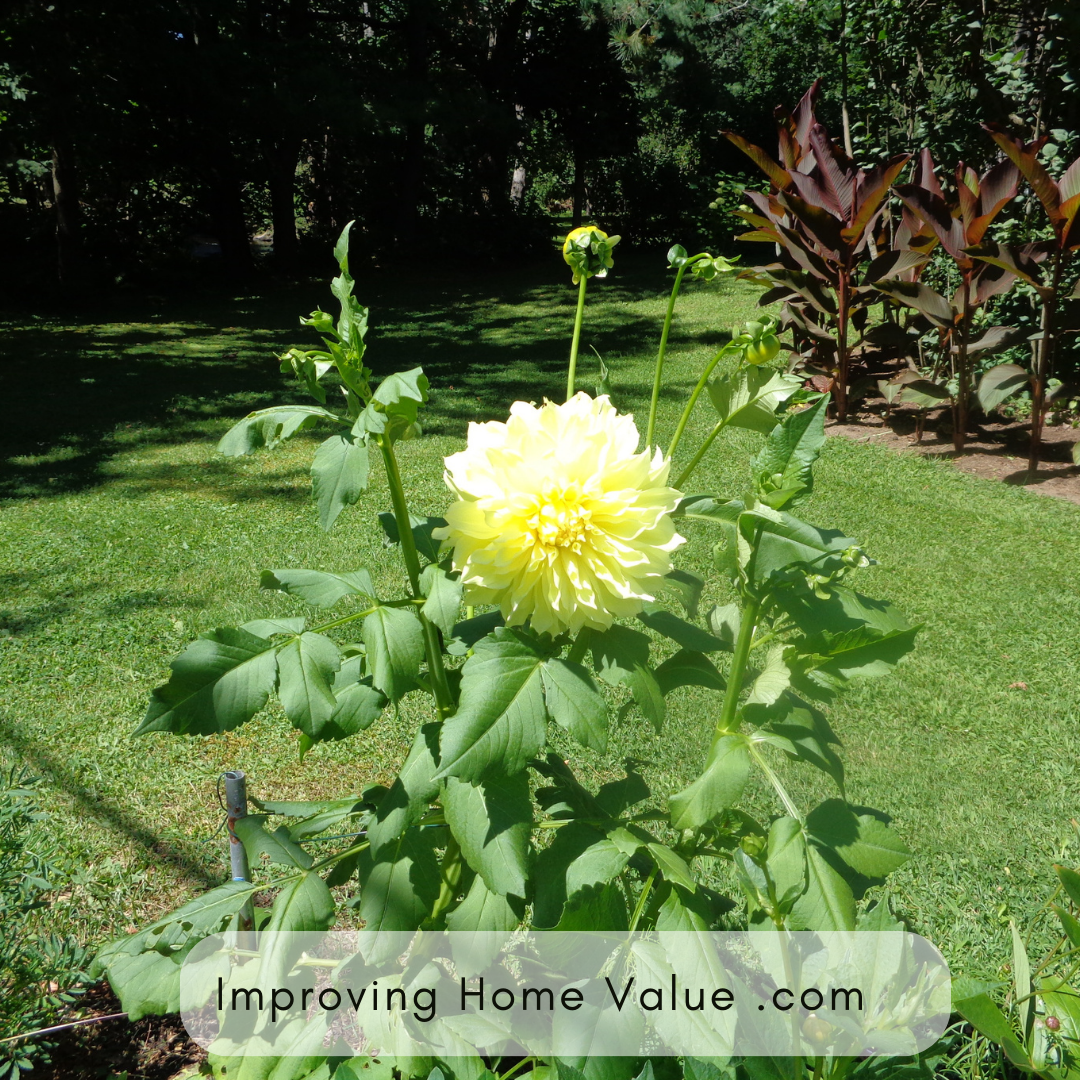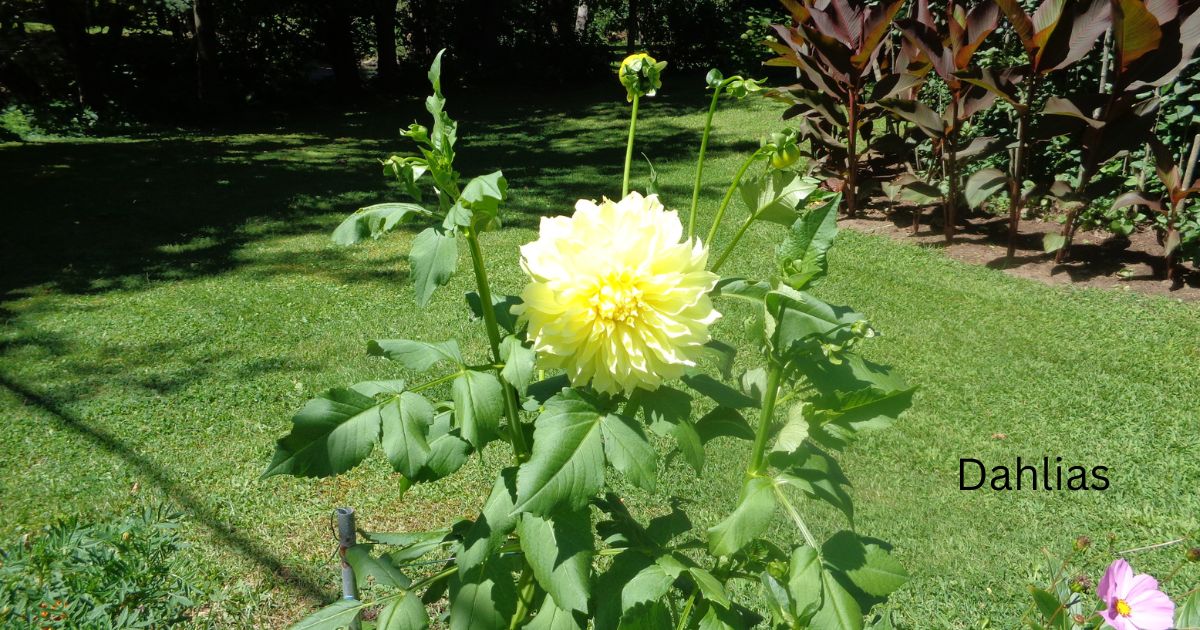Selecting the right dahlia varieties for your garden can feel like choosing a favorite star from the sky, but it’s absolutely worth it, so consider your region’s climate and your garden’s landscape. Whether you’re looking for a small border variety or a tall, dramatic plant, there’s a dahlia to match.
Timing is key when planting dahlias, therefore get those tubers in the ground after the last frost in spring. They love mild temperatures, so a good rule of thumb is to wait until the soil reaches around 60°F. Proper spacing helps them thrive. Aim for about 18-24 inches apart, which gives each plant room to stretch out and grow healthy.
Now, let’s talk dirt! Dahlias aren’t too picky about soil, but they do love well-draining dirt with a pH between 6.0 and 7.5. Add some compost or organic matter to enrich the soil. If your soil tends to hold water, mix in some sand or perlite to improve drainage. Good soil prep sets the stage for robust dahlias.
Planting dahlias involves a bit of finesse. Dig a hole about 4-6 inches deep. Place the tuber horizontally, eyes up, and cover it with about 2 inches of soil. Don’t fill the hole completely yet. As the dahlia grows, fill in the hole gradually. This helps the stem stay supported and encourages healthy growth.
Mulching around dahlias isn’t just a tip; it’s a game-changer. It helps retain moisture, keep weeds at bay, and regulate soil temperature. A 2-3 inch layer of organic mulch works wonders. In addition it adds to the aesthetics of your garden, making it look neat and well-tended.

Section 2: Providing Optimal Light and Watering Conditions
Dahlias are sun lovers. Six to eight hours of sunlight each day is ideal for these beauties. They need as much light as they can get to produce those stunning blooms. If your garden doesn’t get full sun, spot the sunniest location, and you’ll be rewarded with vibrant flowers.
Ensuring proper lighting all depends on your climate. In cooler regions, full sun is perfect. In hotter areas, a little bit of afternoon shade can help protect them from heat stress. The key is balanced light—it drives photosynthesis and keeps them blooming.
When it comes to watering, think moderation. Dahlias need a steady supply of moisture, especially when they’re just starting out and during their bloom period. Water them deeply about 2-3 times a week. Keep the soil moist but not soggy, because too much water can lead to rot, while too little can stunt their growth.
To check if your dahlias need water, stick your finger into the soil up to the first knuckle. If it feels dry, it’s time for watering. Drip irrigation or soaker hoses can be very effective, delivering water right where it’s needed without wasting a drop.
Over or under watering can bring troubles. Overwatered dahlias might show yellowing leaves, while under watered ones may have browning edges and drooping. Correct your watering habits at the first sign of these symptoms to keep your plants in top shape.
Supporting, Overwintering, and Maintaining Dahlia Plants
Tall dahlia varieties sometimes need a little help standing tall. Staking is essential for these plants, especially in windy areas. Insert stakes at the time of planting, so you don’t risk damaging tubers later. Use soft ties or garden twine to support stems without cutting into them. Keep it loose enough to allow for growth.
Pruning and deadheading dahlias can encourage more blooms and a bushier appearance. Regularly remove spent flowers to redirect energy to new blooms. Cut back any crowded or weak stems to promote healthy airflow and reduce disease risk. Remember, it’s not just about looks—it’s about plant health, too.
Dahlias can fall prey to pests and diseases like aphids, spider mites, and powdery mildew. Keep an eye out for any signs of trouble. Organic insecticidal soaps or neem oil can manage most pest issues, while good spacing and airflow reduce disease risks. Healthy plants are more resilient, so keep them thriving with consistent care.
Overwintering dahlias involves digging up and storing tubers, basement will do so they do not freeze through the cold months. After the first frost, cut back the plants, leaving a few inches of stem. Carefully lift the tubers out, brush off excess soil, and let them dry for a day. Store them in a cool, dark place in peat moss or sawdust. Labeling them ensures you know what’s what when spring rolls around again.
When it’s time to replant, inspect the stored tubers for any signs of rot or disease, and only replant the healthy ones. Each clump should have at least one eye—a little growth point that will become the new plant.
In Conclusion
If you are looking for a beautiful flowering plant to give your yard and gardens that wow look, then try any of the varieties and colors of Dahlias. Wishing you all the best on your garden planting around your home.
